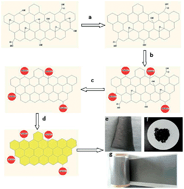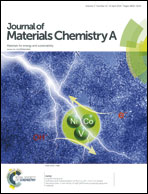Binder-free phenyl sulfonated graphene/sulfur electrodes with excellent cyclability for lithium sulfur batteries
Abstract
In this study, phenyl sulfonated graphene/sulfur (PhSO3-RG/S) composites were synthesized for the first time via an in situ redox reaction in aqueous solution. These composites were characterized by X-ray diffraction (XRD), Brunauer–Emmett–Teller (BET), scanning electron microscopy (SEM), transmission electron microscopy (TEM) and thermogravimetry (TG). The results show that sulfur was thoroughly enveloped by functionalized water-soluble phenyl sulfonated graphene, providing a conductive coating for electron transport and functional groups that interact strongly with polysulfides or sulfur to improve trapping. In our study, we found that large amounts of conductive carbon additives and binders were not required when the electrodes were prepared on carbon-coated aluminum foil substrates because phenyl sulfonated graphene has excellent electrical conductivity, and contains functional groups that interact strongly with carbon and sulfur. The electrochemical tests show that the binder-free PhSO3-RG/S electrodes have high reversible capacity, good cycling stability at the current density of 0.2 C, and excellent rate capability.


 Please wait while we load your content...
Please wait while we load your content...